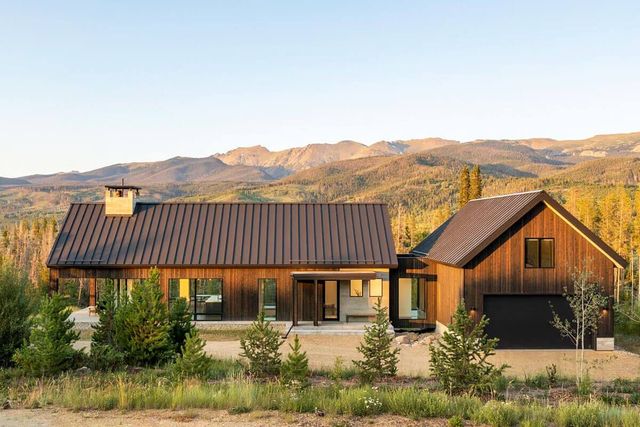A Visit to Casa Modesta, Portugal
Casa Modesta is a former fisherman's house turned boutique hotel tucked into the wilds of Portugal's Ria Formosa National Park. It may be an award-winning architectural space, but first and foremost it's a family home, defined by humility and heart, as writer Stacy Suaya discovered on her recent visit.
- Category
- First Person
- Written by
- Stacy Suaya
- Published
- December 16, 2022
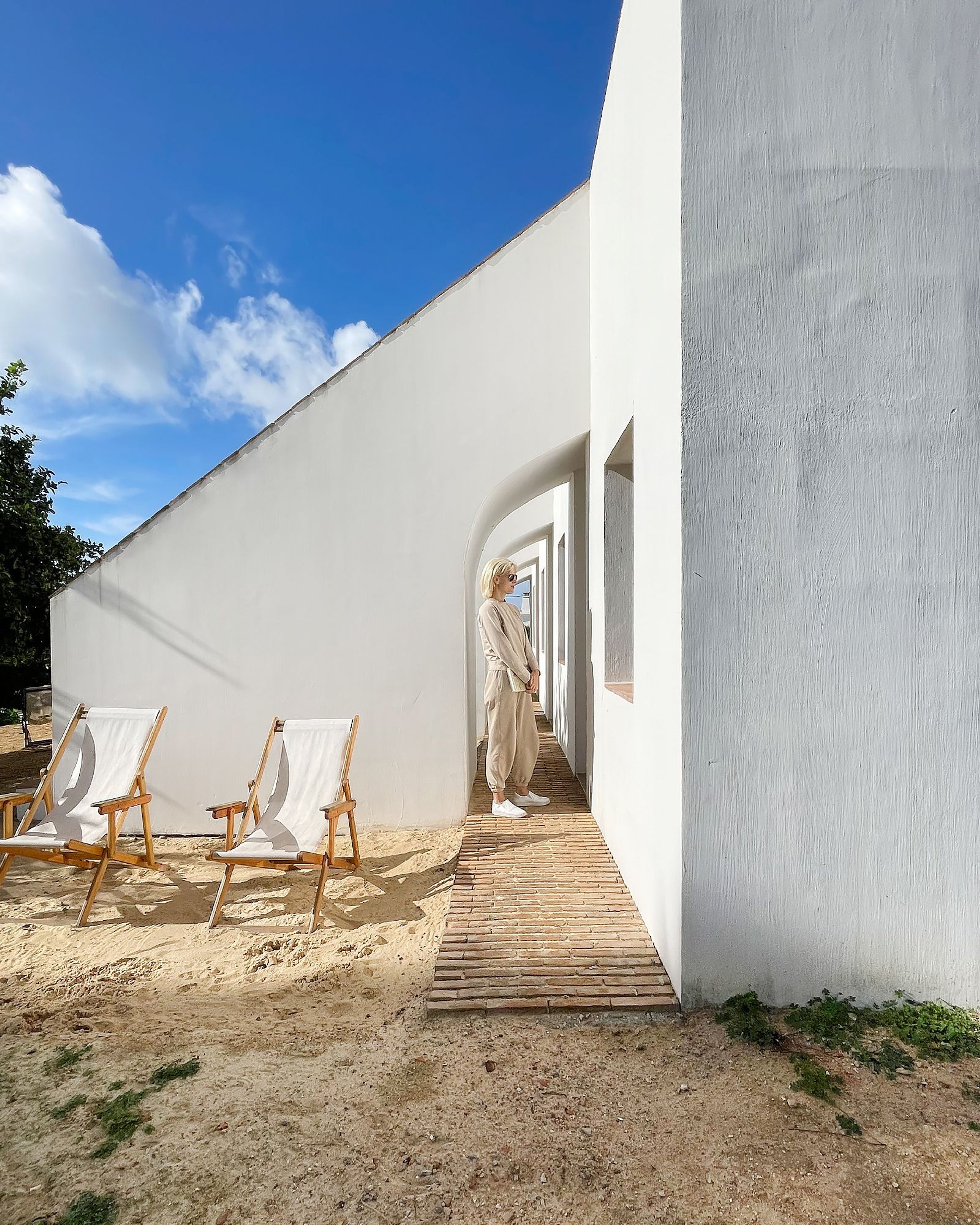
“Have you ever had tagine?” Nuno Lopes asked as he walked into the dining room at Casa Modesta, holding a clam-shaped copper pot. I had—several years ago, in Marrakesh—but was surprised to see the evening’s headlining dish now in Europe. Then again, my boyfriend and I were visiting Portugal’s Algarve region, on the southernmost tip of the continent and only 530 miles away from Morocco.
Lopes set the dish down and lifted the top of the cataplana, which indeed has been compared to Morocco’s tagine and Spain’s paella, revealing a rainbow panoply of slow-cooked vegetables: pumpkin, zucchini, tomato, cauliflower, and asparagus, mixed with chickpeas (I am vegan), Aljezur sweet potato, and fresh coriander. Lopes was born in Angola and cherished his grandmother’s recipes as a child. When he came to the Algarve and Casa Modesta, he worked with the grandmother of his boyfriend and Casa Modesta owner Carlos Fernandez to infuse the property’s kitchen with a Moorish influence.
“Here at Casa Modesta, as in any other Portuguese house, the table is the heart, cherishing the union of family and friends. In this way, we love to share the flavors, aromas and emotions when we invite our guests to our table,” says Fernandez. “For a happy table, we need a good kitchen full of fresh and organic ingredients like vegetables from our gardens, fish and seafood from our seas, and all the traditions passed down by our grandparents and cultural heritage.”
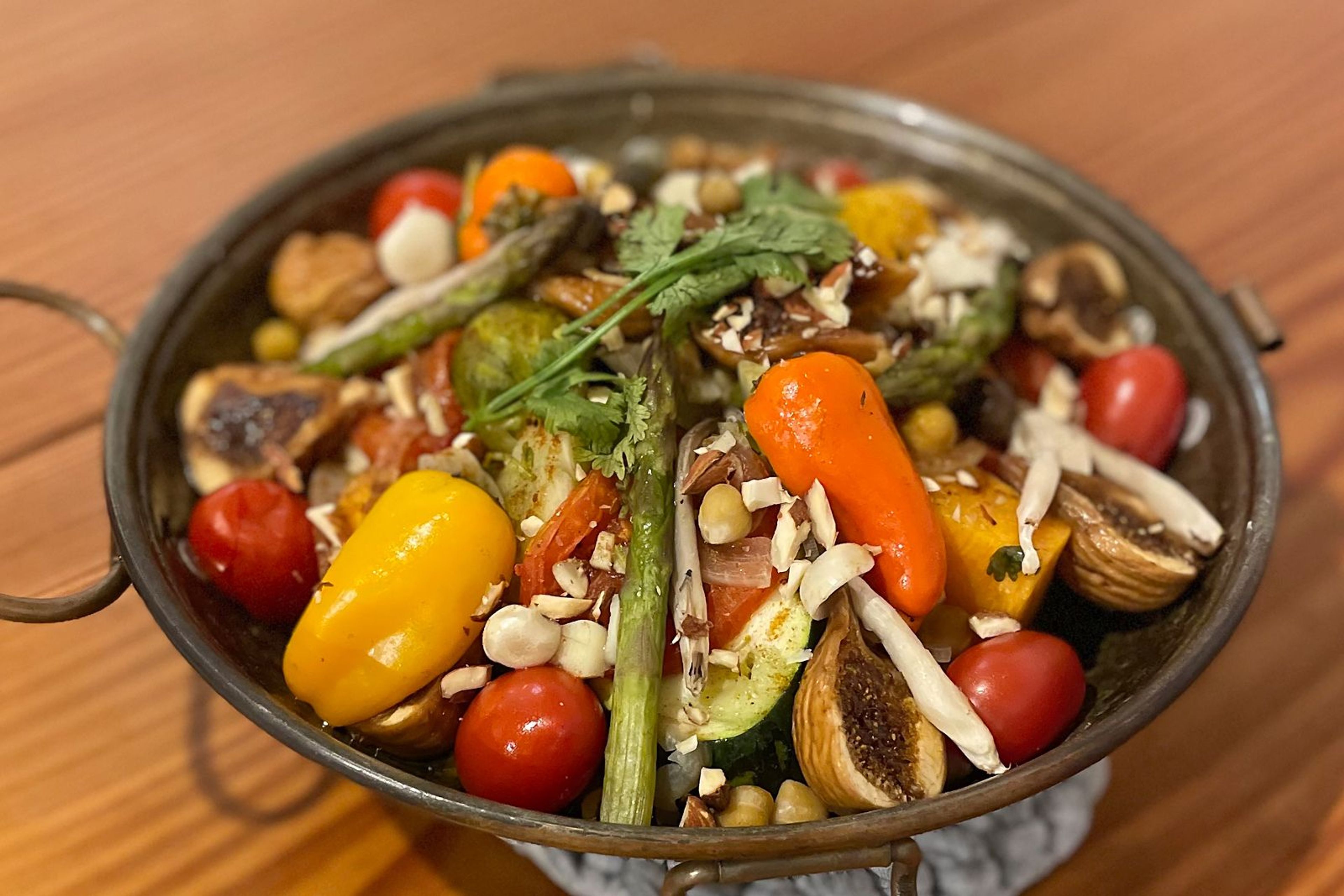
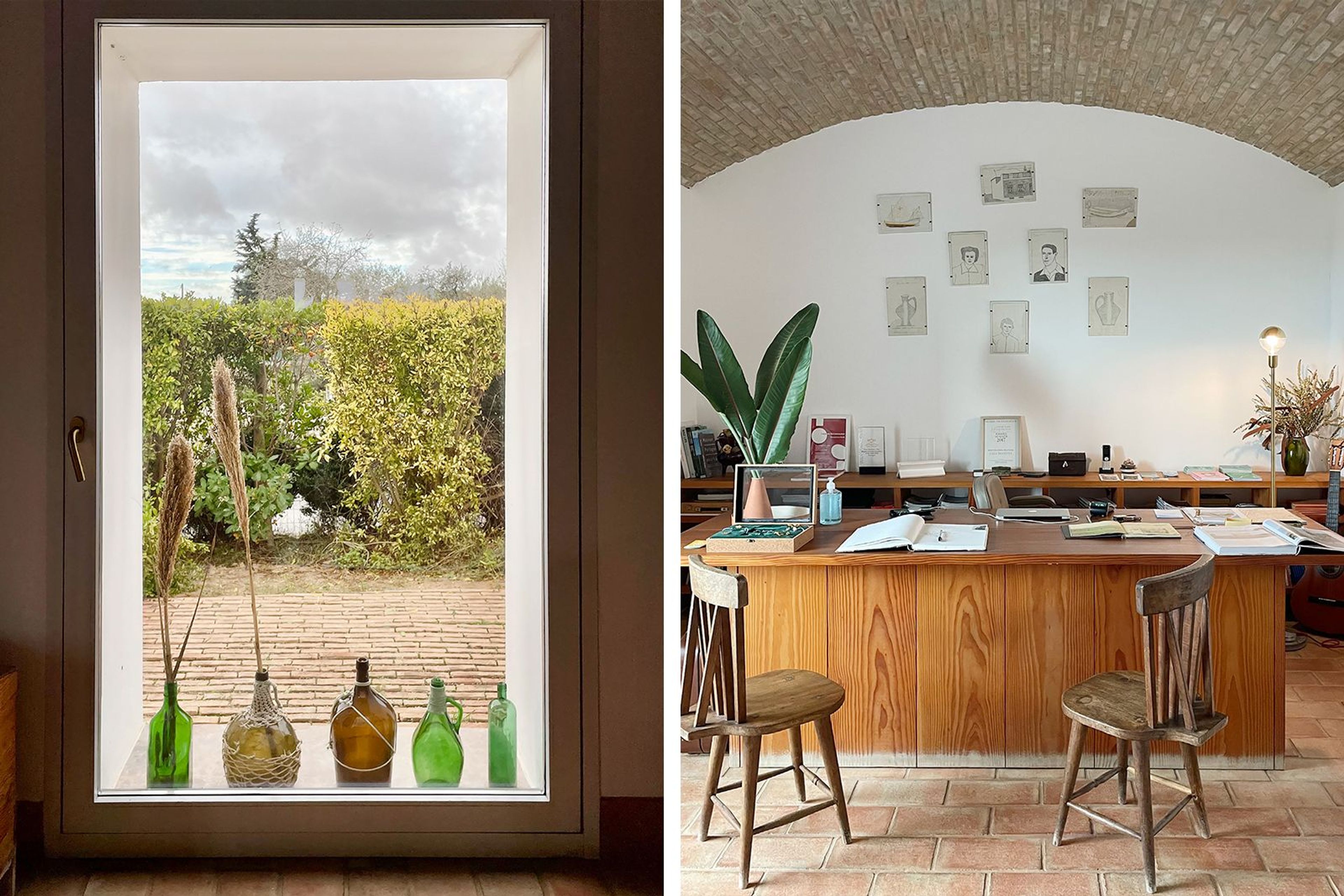
Their happiness recipe was a hit. We devoured the cataplana with glasses of bright Monte da Casteleja orange wine and soaked up the final drops with our remainders from the first course: cachopo bread, local butter and flor de sal, and pink peppercorns with their bursts of sweet heat. Meanwhile, we delighted in the Finnish couple sitting at our same long, bench-style table. They sought a sunny refuge from Helsinki’s winter, and we swapped stories about our respective countries. We learned, for example, that it’s very cool to visit Lapland and see the Northern Lights, but staying in a glass hotel isn’t.
The dining room, and Nuno and Carlos, were a page out of Kinfolk magazine come to life. Above us were high, barrel-vaulted ceilings; on the walls hung delicate heirloom plates, and the men moved around in well-tailored clothing suffused with dashes of charm. The lighting was soft, the living was slow and intentional, and the flowers on the table would have made Robert Mapplethorpe swoon. Did I mention that the property’s rescue dog, Modesto, also made an appearance? We had to admire him. This dog would have been handsomely rewarded if even one heavenly morsel made its way to the floor.
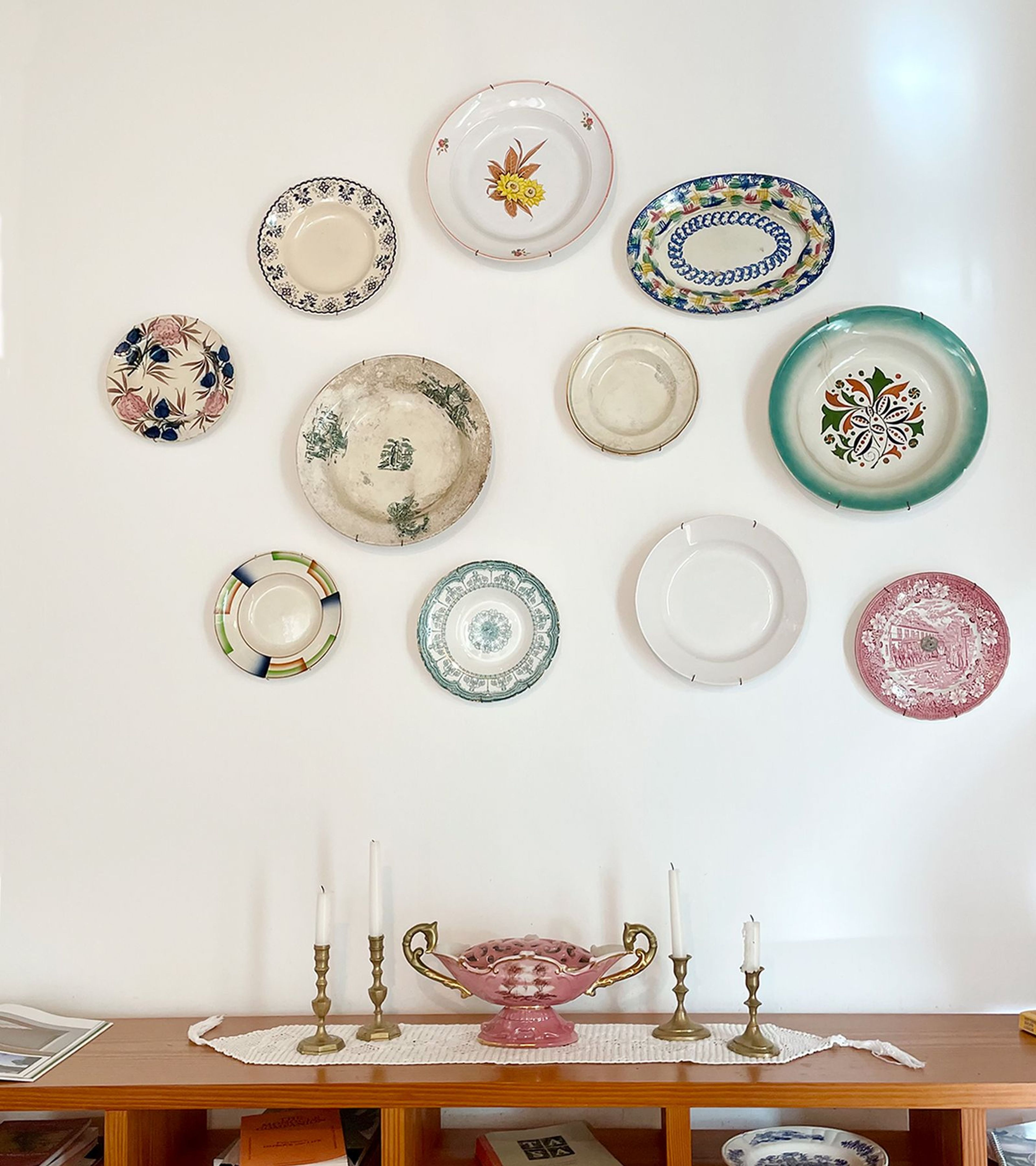
Avocado mousse with port wine concluded the meal, and we surrendered our napkins. It was time to climb upstairs, where we remembered why we’d come here in the first place: not the food, but the design and architecture. Casa Modesta had the feeling of staying at a friend’s house, but you know, a European friend with prize-winning architect parents. Our room conveyed simple luxury; a well-hidden, fold-down desk, a central wardrobe separating the living area and bathroom, and red limestone clay floors. The property belonged to Carlos’s grandfather in the 1940s; it was lovingly transformed into a nine-suite hotel by Carlos’s sister, Vânia, in partnership with her women-run architecture firm, PAr.

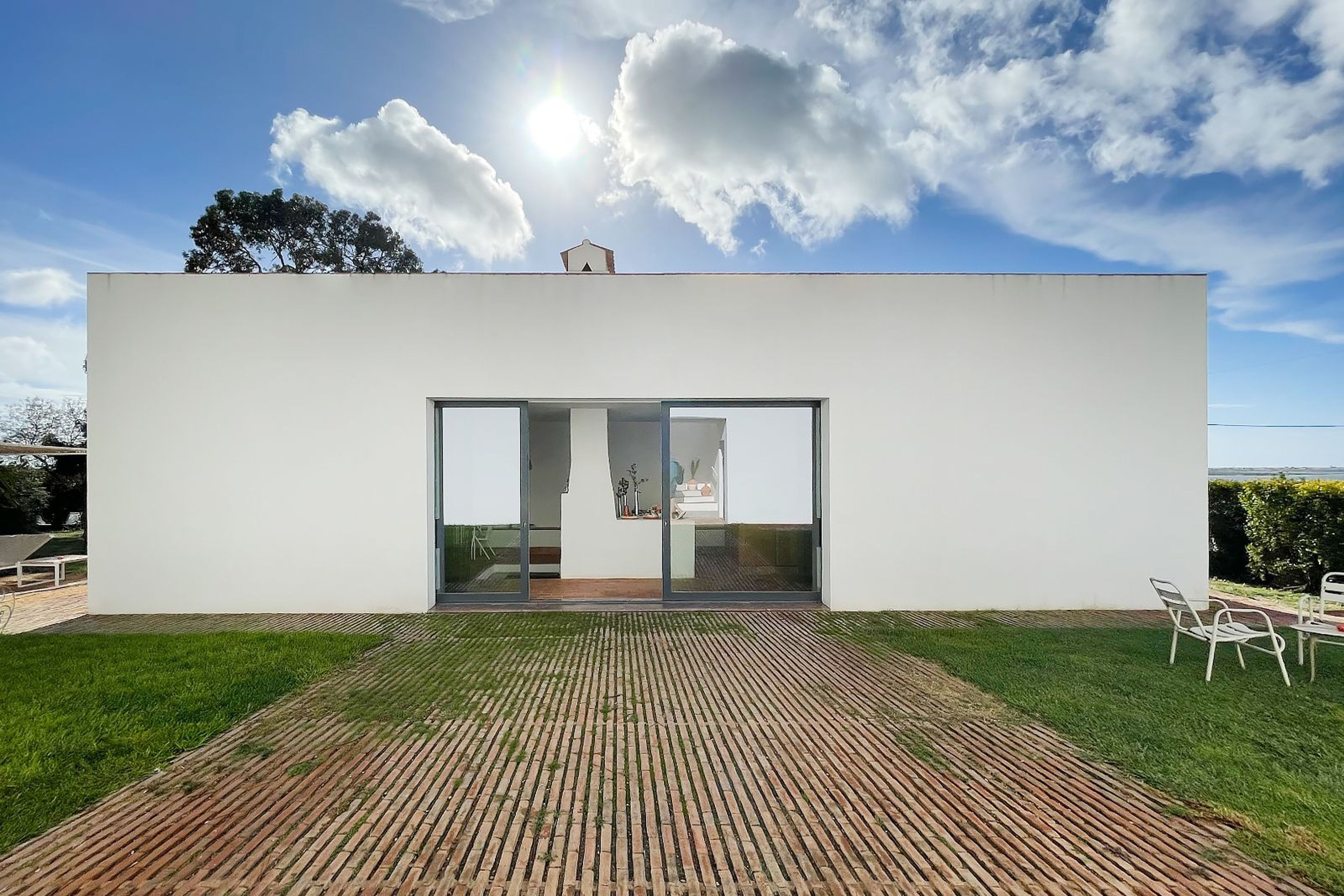
The next day, we awoke to roosters crowing. While my boyfriend fulfilled his years-long dream of a luxurious morning writing fiction “somewhere in the south of Europe, near the water” on the top deck, overlooking the Ria Formosa lagoon, dotted with boats, I read in bed. Afterward, we went down to the dining room. But this time, the table was dressed with fresh fruit, bread, homemade granola, orange juice, “mummy’s cake", and jams. Carlos and Nuno issued coffee and many ideas for spending our time in neighboring Olhão, a fishing port nicknamed the “Cubist city” for its Escher-like maze of angular buildings, all awash in white.

First, we drove to the 17th-century Rococo-style Igreja Matriz de Nossa Senhora do Rosário church, where fishermen’s wives used to pray for the safety of their husbands while at sea. We paid a cleric a few euros for access to the bell tower, and a narrow stone walkway led us up to what Carlos told us was an amazing view of the Cubist city. He was right.
We took another of his recommendations for lunch: Chá Chá Chá, a cozy little restaurant near the city’s famous fish market owned by former food journalist Kevin Gould, where the menu changes daily depending on the day’s catch. My boyfriend enjoyed a plate of grilled, skewered prawns that were so fresh and well-cooked you could eat them with the shells on. I had the vegan chef’s plate, a lively dish offering creamy butter beans, grilled eggplant with lemon tahini, vinegary slaw and pimento rice. The vegan chocolate tart was dubiously delicious. We asked our waitress at least twice: “Are you sure this is vegan?”
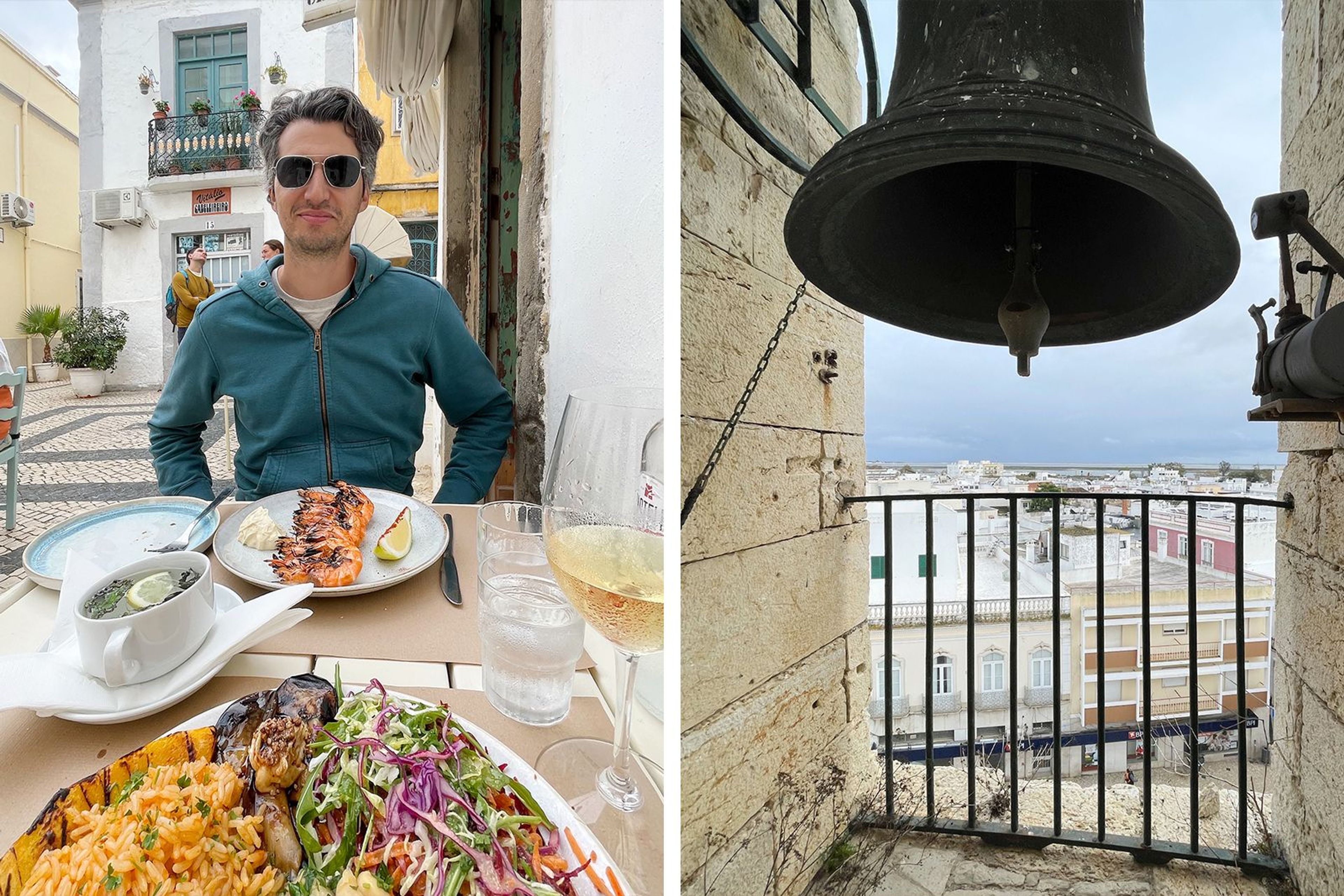
Following an afternoon of napping and watching movies in bed while a light rain drizzled outside, we drove to Pizza na Pedra for a take-out dinner, where a host told us that our tomatoes might be sweeter than we were used to because they were grown in volcanic soil and that they didn’t cut our pizza because the mozzarella was Denominazione di Origine Protetta and needed to be held intact until we were absolutely ready to eat. What delicious caveats!
Upon returning to Los Angeles, I’ve often thought of trying to recreate that first cataplana meal with California produce. I worry that it won’t be the same without Casa Modesta’s peppercorns, its Mapplethorpe flowers, and Modesto the dog. But there’s one motto we definitely took with us, which seems like the best way to begin: “The table is the heart.”
Follow in Stacy's footsteps with a visit to Casa Modesta here.
Photographs: Stacy Suaya
